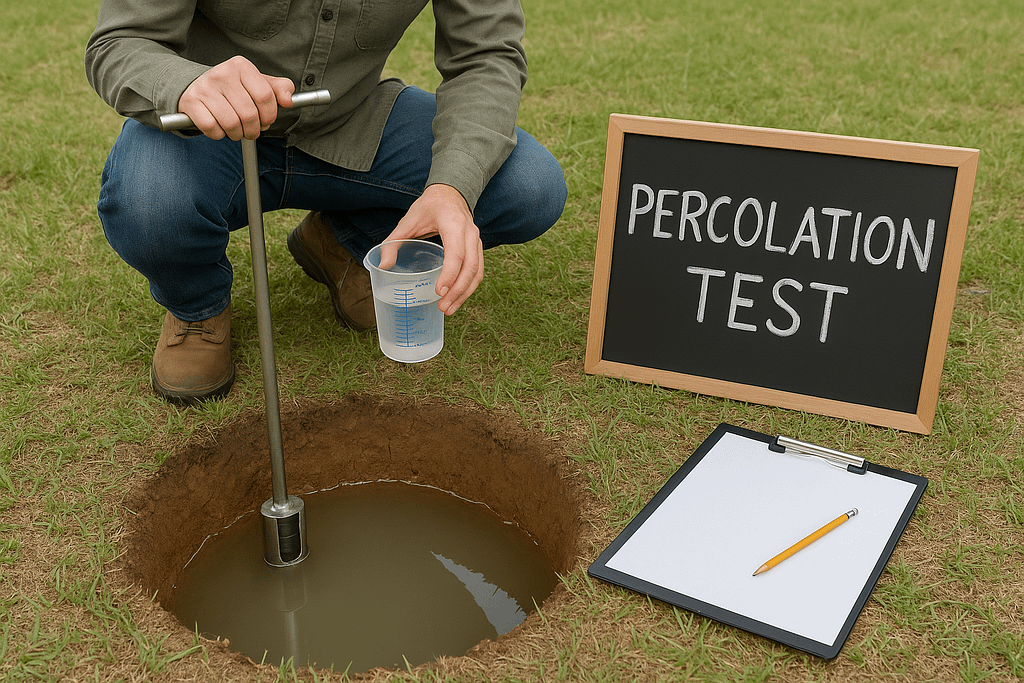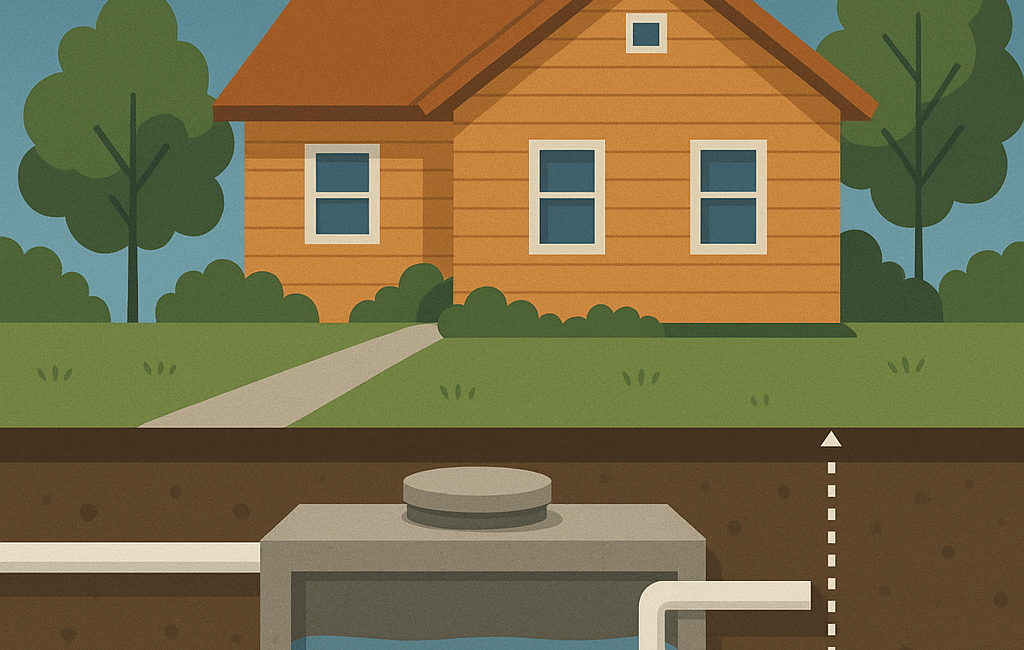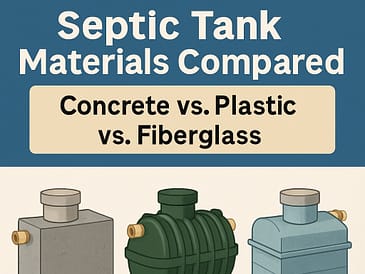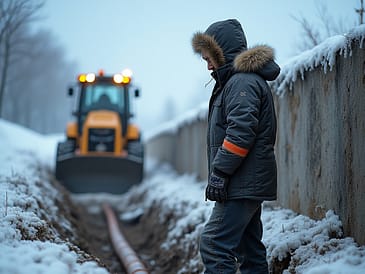When it comes to septic tank installation, getting the depth right isn’t just important—it’s absolutely critical. Think your septic tank can go anywhere you dig a hole? Think again! The depth of your septic tank installation can make the difference between a system that purrs like a contented cat for decades and one that becomes your wallet’s worst nightmare. Whether you’re a homeowner planning your first septic system or a DIY enthusiast ready to tackle this underground challenge, understanding proper installation depth will save you from costly mistakes and regulatory headaches down the road.
Understanding Septic Tank Installation Depth
Septic tank installation depth refers to how far below ground level your tank sits, measured from the surface to the top of the tank. But here’s where it gets interesting—this isn’t just about digging a hole and dropping in a tank like you’re planting a really expensive, really large bulb.
Key Factors That Determine Your Installation Depth
Several critical factors influence how deep your septic tank should go, and ignoring any of them is like playing septic system roulette with loaded dice.
Soil Type and Composition: Clay soil holds water like a grudge, while sandy soil drains faster than your teenager’s allowance. Rocky soil might require blasting or specialized equipment, affecting both depth options and installation costs. Your soil type directly impacts drainage patterns and determines how your system will perform long-term.
Local Building Codes and Regulations: Every municipality has its own rules, and they’re not suggestions. Some areas require minimum depths to prevent freezing, while others mandate maximum depths to ensure proper access for maintenance. Violating these codes isn’t just expensive—it can render your entire system illegal.
Water Table Level: Installing a septic tank too close to the water table is like trying to store cookies in a swimming pool. High water tables can cause tanks to float, shift, or fail completely. You’ll need at least 2-4 feet of separation between your tank bottom and the seasonal high water table.
Tank Size and Model: Larger tanks require deeper excavations, but they also provide more treatment capacity. The tank’s design—whether it’s concrete, fiberglass, or plastic—affects weight distribution and structural requirements at different depths.
Climate and Seasonal Considerations: In northern climates, frost lines can extend several feet deep. Installing too shallow means risking freeze damage, while going too deep in areas with high water tables creates its own problems.
“The most expensive septic repair I’ve seen was a $30,000 replacement caused by improper depth installation. The homeowner saved $500 upfront by skipping the site assessment, but it cost them their entire system within three years.”
– Mike Rodriguez, Licensed Septic Contractor
Standard Guidelines for Septic Tank Depth
Most residential septic tanks are installed with their tops between 8 inches and 3 feet below ground surface. This range isn’t arbitrary—it’s the sweet spot that balances accessibility, protection, and proper function.
Typical Depth Ranges
For most residential installations, you’re looking at:
Minimum Depth: 8-12 inches of soil cover over the tank top. This provides basic protection from surface loads and temperature fluctuations while maintaining reasonable access for maintenance.
Maximum Depth: 3-4 feet to the tank top in most areas. Going deeper makes maintenance access difficult and expensive, requiring specialized equipment for pumping and inspection.
Optimal Range: 18-30 inches of cover strikes the perfect balance for most installations, providing adequate protection while keeping maintenance costs reasonable.
How Depth Affects Performance
Proper depth directly impacts your system’s performance and your wallet. Shallow installations risk damage from surface loads and freezing, while overly deep installations create access problems that turn routine maintenance into expensive ordeals. The right depth ensures proper inlet and outlet pipe grades, preventing backups and ensuring efficient waste flow.

Site Assessment: The Foundation of Success
Before you even think about breaking ground, a thorough site assessment is your roadmap to installation success. Skipping this step is like performing surgery blindfolded—technically possible, but not recommended.
Conducting Soil Percolation Tests
A perc test determines how quickly water moves through your soil, directly affecting your installation depth options. Fast-draining soils might allow for shallower installations, while slow-draining soils require careful depth planning to prevent system backup.
The test involves digging test holes, filling them with water, and measuring how quickly the water level drops. This isn’t a weekend DIY project—hire a qualified professional who understands local soil conditions and regulatory requirements.
Evaluating Slope and Topography
Your property’s natural slope affects drainage patterns and installation options. Steep slopes might require deeper installations on the uphill side to maintain proper grades, while flat areas need careful planning to ensure adequate drainage away from the tank.
Professional Consultation
A licensed septic contractor brings invaluable experience to depth planning. They understand local codes, soil conditions, and installation challenges that can make or break your project. Their expertise in depth determination often pays for itself by preventing costly mistakes.
“I always tell homeowners that the depth decision is made before we dig the first shovelful. Everything we discover during site assessment—soil type, water table, slopes—determines our installation depth strategy.”
– Sarah Chen, Environmental Engineer
Installation Process and Depth Considerations
Once you’ve determined the proper depth, the installation process becomes a carefully choreographed dance of excavation, positioning, and backfilling.
Excavation Site Preparation
Excavate to the predetermined depth plus an additional 6 inches for a level gravel base. The excavation should be wide enough to allow workers to position the tank properly and make necessary connections. Don’t forget to call for utility locates before digging—hitting a gas line is definitely not part of the plan.
Ensuring Structural Integrity
At the proper depth, your tank needs stable, level support. Create a level gravel base using crushed stone, not river rock or sand. The base should extend beyond the tank footprint to distribute weight evenly. For deeper installations, pay special attention to sidewall support to prevent shifting.
Inlet and Outlet Alignment
Proper depth ensures correct pipe grades for efficient waste flow. Inlet pipes should enter the tank slightly higher than outlet pipes, typically with a 1-2 inch drop. Getting the depth wrong means fighting gravity, and gravity always wins.
Backfilling Techniques
Backfill in lifts, compacting every 12 inches to prevent settling. Use clean fill material—no rocks, debris, or organic matter that could settle or damage the tank. For deeper installations, take extra care with compaction to prevent future settling that could damage inlet and outlet connections.
Problems with Incorrect Installation Depth
Getting the depth wrong isn’t just inconvenient—it’s expensive, potentially dangerous, and sometimes illegal.
Drainage and Flooding Issues
Too shallow, and surface water infiltrates your system. Too deep, and groundwater becomes a problem. Either scenario can overwhelm your system, causing backups, odors, and potential health hazards.
Maintenance Access Problems
Overly deep installations turn routine pumping into expensive excavation projects. Pumping equipment has limitations, and exceeding them means digging up your yard every few years for maintenance access.
Structural Risks
Incorrect depth can lead to tank shifting, cracking, or complete collapse. Floating tanks caused by high water tables can disconnect from pipes, while inadequately supported deep installations can settle and crack under soil pressure.
Code Violations and Legal Issues
Installing outside permitted depth parameters can result in failed inspections, fines, and requirements for complete system replacement. Insurance companies may also deny claims for damage caused by non-compliant installations.
Choosing the Right Septic Installer
Your installer’s expertise in depth determination can make or break your project. Don’t just hire the lowest bidder—hire the most qualified professional.
Verifying Experience and Credentials
Ask potential contractors about their experience with installations similar to your site conditions. Request references from recent jobs and verify their licensing and insurance status. A qualified installer should easily explain their depth determination process and local code requirements.
Permitting and Planning
Your installer should handle all permitting requirements and provide detailed installation plans showing proposed depths and rationale. Be wary of contractors who suggest shortcuts or seem unfamiliar with local regulations.
Site-Specific Planning
The best installers provide detailed, site-specific depth recommendations based on thorough site assessment. They should explain their reasoning and provide alternatives if site conditions present challenges.
“A professional installer’s depth planning should account for everything from soil conditions to future maintenance access. If they can’t explain their depth choice, find someone who can.”
– Tom Wilson, Master Plumber and Septic Specialist
Final Thoughts on Septic Tank Installation Depth
Proper septic tank installation depth isn’t just a technical requirement—it’s the foundation of a reliable, long-lasting waste treatment system. From soil assessment to final backfilling, every step of the depth determination and installation process affects your system’s performance, maintenance requirements, and operational costs.
Remember, this isn’t a project where “close enough” counts. Work with qualified professionals who understand local conditions, regulations, and installation best practices. The extra investment in proper planning and professional installation pays dividends in system reliability, reduced maintenance costs, and peace of mind.
Whether you’re planning your first septic installation or replacing an existing system, prioritize proper depth planning. Your wallet, your property, and your family’s health depend on getting it right the first time. When in doubt, consult with licensed professionals who can guide you through the complexities of site assessment, depth determination, and compliant installation.



